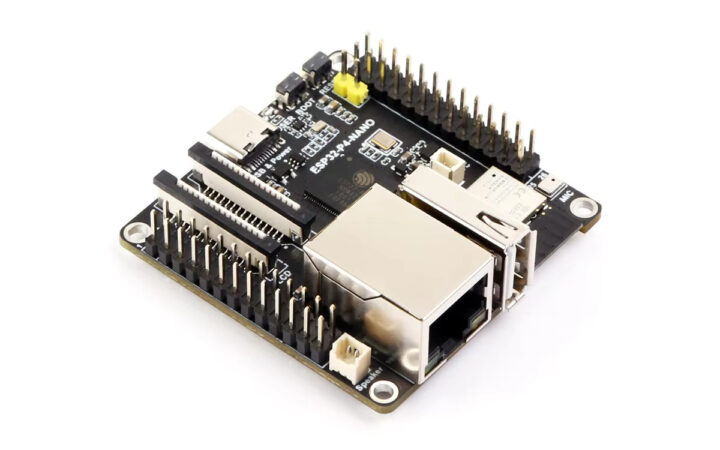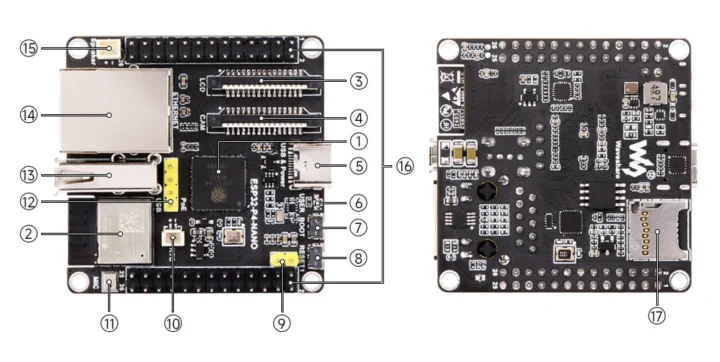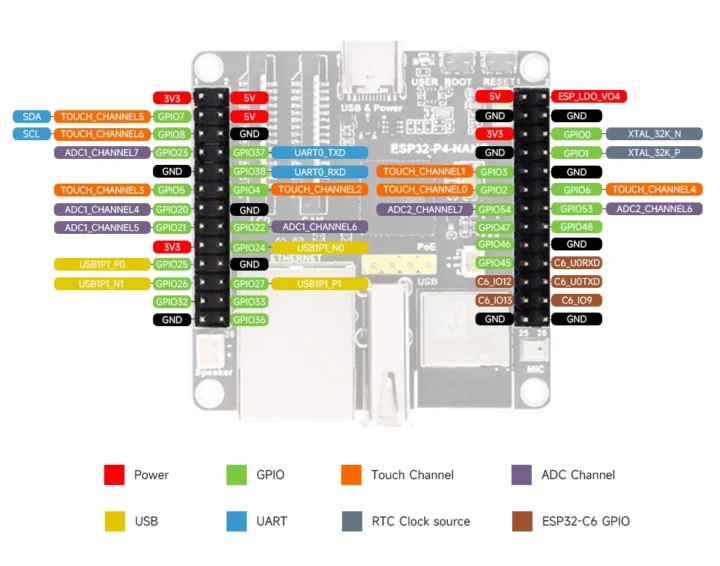Waveshare ESP32-P4-NANO is the first third-party ESP32-P4 RISC-V board we’ve seen and it follows the launch of the Espressif Systems’ ESP32-P4-Function-EV-Board devkit introduced this summer.
While the ESP32-P4 is a general-purpose microcontroller, the ESP32-P4-NANO board still implements wireless connectivity through an ESP32-C6 WiFI 6 and Bluetooth LE 5.4 module and offers a range of interfaces such as an Ethernet RJ45 port with optional PoE, MIPI DSI and CSI interfaces, a USB Type-A OTG port, and GPIO headers for expansion.
ESP32-P4-NANO specifications:
- Microcontroller – ESP32-P4NRW32
- MCU
- Dual-core RISC-V microcontroller @ 400 MHz with AI instructions extension and single-precision FPU
- Single-RISC-V LP (Low-power) MCU core @ up to 40 MHz
- GPU – 2D Pixel Processing Accelerator (PPA)
- VPU – H.264 and JPEG codecs support
- Memory – 768 KB HP L2MEM, 32 KB LP SRAM, 8 KB TCM, 32MB PSRAM
- Storage – 128 KB HP ROM, 16 KB LP ROM
- MCU
- Wireless module – ESP32-C6-MINI-1 Wi-Fi 6 and Bluetooth 5 module connected to ESP32-P4 over SDIO
- Storage
- 16MB SPI NOR flash
- MicroSD card slot (SDIO 3.0)
- Display interface – 2-lane MIPI DSI connector supporting optional 10.1-inch capacitive touchscreen display (1280×800, 10-point touch)
- Camera interface – 2-lane MIPI CSI connector compatible with Raspberry Pi cameras
- Audio
- Onboard microphone
- 2-pin 1.25mm pitch connector for 8Ω 2W speaker
- Networking – 10/100Mbps Ethernet RJ45 port
- USB
- USB Type-A OTG 2.0 high-speed port
- USB Type-C connector for power supply, firmware flashing, and debugging
- Expansion – 2x 26-pin GPIO headers with up to 28x GPIO, 7x touch panel pins, I2C, 6x ADC, USB, 3x GPIO and UART for ESP32-C6, 5V, 3.3V, and GND power signals
- Security features – Secure Boot, Flash Encryption, cryptographic accelerators, and TRNG.
- Misc
- Power LED
- BOOT and RESET buttons
- RTC battery header
- Power Supply
- 5V via USB-C port
- Optional PoE module
- Dimensions – 50 x 50 mm
Waveshare has recently made it a habit of releasing new hardware without any proper documentation. The ESP32-P4-NANO is not different as the wiki page is currently empty… So at this time, we can assume the ESP32-P4 board only works with the ESP-IDF framework, although we recently wrote about a PlatformIO fork working with ESP32-P4. The main benefits of the board are that it is quite smaller and cheaper than the ESP32-P4-Function-EV-Board measuring 82.5 x 74 mm.
Waveshare sells the ESP32-P4-NANO on AliExpress for $19.79 to $96.29 depending on options and it should soon become available on the company’s Amazon store. The cheapest price is for the basic with the board and speaker, but Waveshare offers various kits up to the P4-NANO-KIT-D with the board, a speaker, a Raspberry Pi camera, a 10.1-inch touchscreen display, a PoE module, and required cables. Alternatively, you can also find all of the kits on the Waveshare online store.
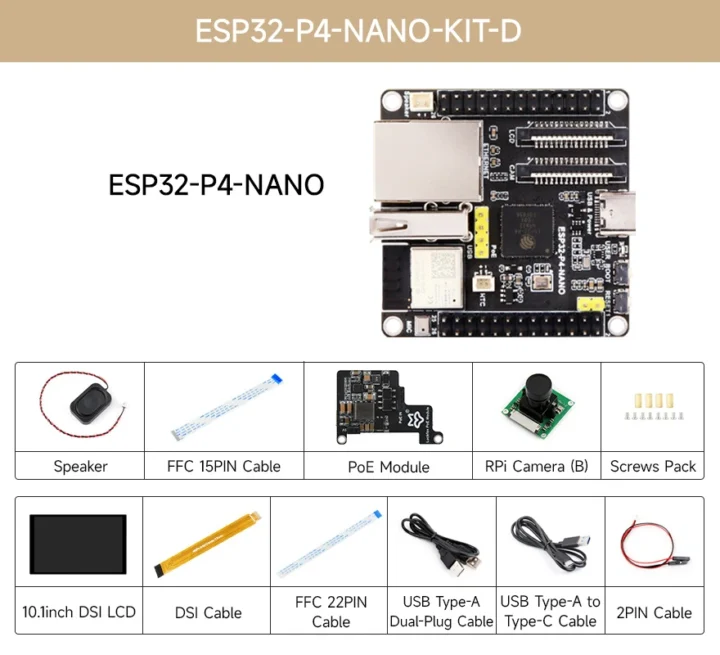
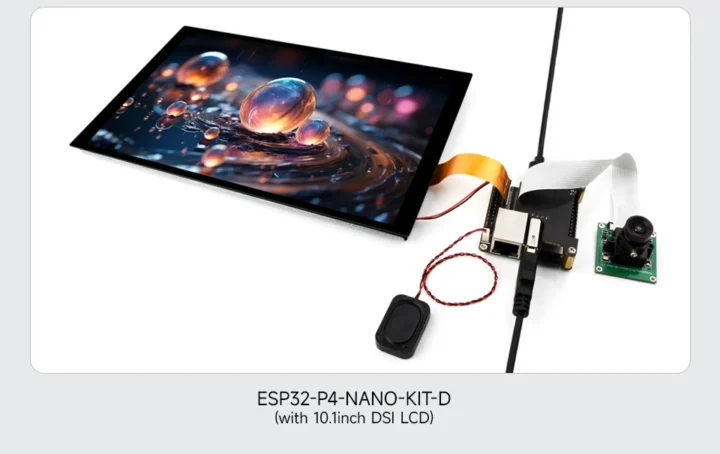
Thanks to Loïc for the tip.

Jean-Luc started CNX Software in 2010 as a part-time endeavor, before quitting his job as a software engineering manager, and starting to write daily news, and reviews full time later in 2011.
Support CNX Software! Donate via cryptocurrencies, become a Patron on Patreon, or purchase goods on Amazon or Aliexpress


